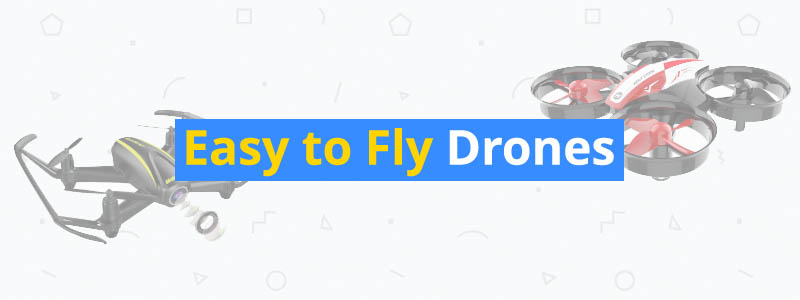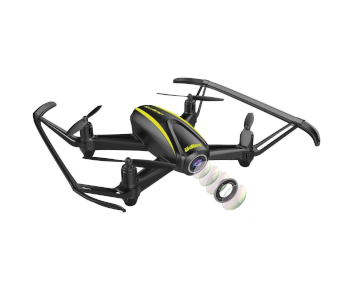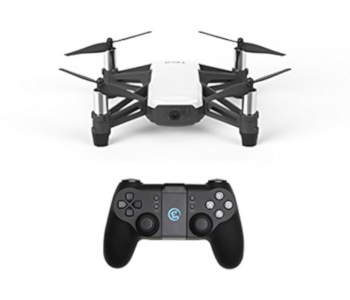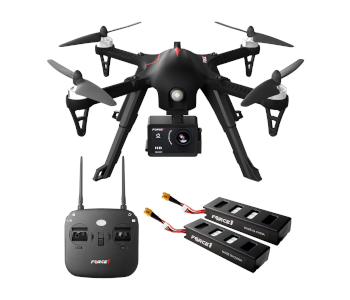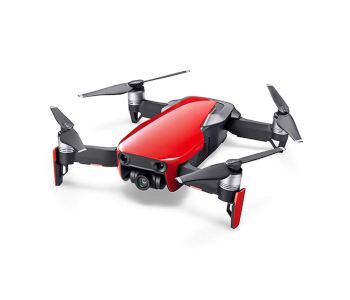7 Easy to Fly Drones for Beginners
Flying drones—especially four rotor quadcopters—has never been easier. Now anyone at any age can take to the skies thanks to intelligent flight modes and failsafe features. This guide looks at 7 easy to fly drones for beginners. Drones that are easy to fly benefit not only novices, but also professional aerial photographers since they can focus more on operating the camera.
| Budget |
|---|
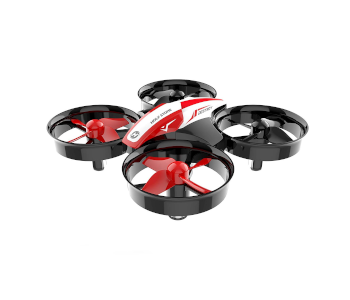 |
| Holy Stone HS210 Mini |
| 4.4/5.0 |
| Flight Time: 7 minutes |
| Flight Range: 164 feet |
| Auto hovering, speed adjustment, low battery alarm, emergency stop, 3D flips. |
| Check Amazon |
| Best Value |
|---|
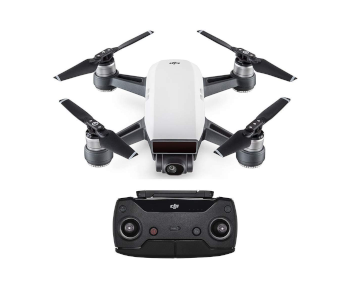 |
| DJI Spark Camera Quad |
| 4.6/5.0 |
| Flight Time: 16 minutes |
| Flight Range: 1.2 miles |
| Lightweight and portable, intelligent modes, gimbal camera, obstacle detection. |
| Check Amazon |
| Top Pick |
|---|
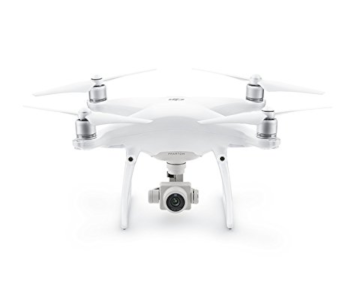 |
| DJI Phantom 4 PRO |
| 4.7/5.0 |
| Flight Time: 30 minutes |
| Flight Range: 4.3 miles |
| Sturdy construction, 20MP 4K gimbal camera, Intelligent Flight Modes, avoidance. |
| Check Amazon |
Stick with the Winners
Some companies dominate the mid to high-end drone market. They include makers like DJI, Parrot, Yuneec, and Autel Robotics. These are all brands that have earned their high reputations.
There are lots of competent toy-grade and lower mid-range brands as well. Some of the favorites are DROCON, Holy Stone, Altair Aerial, Force1, and a few others. Many unrecognized names also flood the market. Some are good, others are a downright waste of money. This guide sticks with the winners so far. That is, those that have earned a reputation of excellence and value for money.
Easy-To-Fly Drone Features
Most brands make a big thing about how easy their drones are to fly. In truth, though, some are harder for newbies to operate than the claims suggest. This guide lists only those flying robots that are genuinely novice-friendly. They all have certain features that make them appealing to first-time pilots.
Here are some essential characteristics (detailed explanations below the list):
- Quality build; can stand up to a few inevitable crashes
- Failsafe features
- Altitude hold function; keeps the quad at a steady height
- Headless mode; craft flies in the direction of the controller, not its nose
- Collision/obstacle avoidance system
- Intuitive remote controller (RC) app and smartphone
Making Sense of it All
The built materials are important. You don’t want to buy a drone that breaks into a thousand pieces on its first crash. Failsafe features are typically for outdoor drones. They make flying easier and less stressful for new pilots. They can include an auto-return to home (RTH) if the battery gets low or the signal becomes weak. Altitude hold and headless mode make flying a lot easier for all pilots.
Obstacle avoidance is a feature found on costlier drones. It works by bringing the aircraft to a stop & hover when it encounters obstacles. Some avoidance systems navigate the craft through or around the obstruction when possible. Transmitters and smartphone control are also relevant. The more intuitive they are, the easier it becomes to fly the bird.
How to Simplify the Flying Experience
Aerial photographers love easy to fly drones so that they can concentrate more on the filming. Beginners like autonomous drones as it means fewer crashes and more enjoyable first-time experiences. The tips below are good habits to form. They are routine procedures that help to make flights easier, safer, and more fun at any level.
- Take time to read the manual and watch any video tutorials
- Practice with a flight simulator first if the drone provides it
- Hover before you set out to check the quad’s aerial stability
- Start to fly in ‘Beginners’ or ‘Low Speed’ mode if the drone has them
- Practice in clear open spaces; avoid areas with people, animals, and traffic
- Check the weather conditions before you fly; know the model’s outdoor capability
- Try not to fly in reverse if you’re a novice drone pilot
Other things will pertain to specific models, so pay particular attention to point 1. Also, get into the habit of doing pre-flight checks before each flight. Recalibrate the compass if necessary, check the battery level, and make sure the props are secure, etc. The makers should cover the essential pre-flight checks in their manuals and quick start sheets.
Not all Drone Pilots Are Equal
It’s important to know your needs, wants, and expectations. Don’t worry if you’re not sure yet. You’ll have a much better idea after reading a few of the mini reviews. Pre-teenagers may look at toy-grade models that they can also fly safely indoors. Teens and adults might want something better. For example, drones that have features and functions they can grow into.
Here are seven buying considerations that can apply to drone enthusiasts at any level:
- Fix a maximum budget to help narrow down your choices
- How long the drone flies on a fully-charged battery
- The time it takes to recharge a drained battery
- The cost of extra batteries if they’re not built-in (fixed)
- How far the drone can fly from its controller
- What can the drone do? What can’t it do? What do you want it to do?
- Cost and availability of spare parts
About this Guide
The drones on this page are not the only easy-to-fly models around. However, they are favorites for good reasons. There are quadcopters on this page to suit all people, their expectations, and budgets. The mini-reviews are the result of personal research and the opinions of experts in the industry. I also considered the feedback from real users before finalizing the list.
The first three for 2019 are Best Budget, Best Value, and the Top pick followed by price, lowest to high. The table below shows the models in the order they appear on the page.
Easy to Fly Drones Comparison Table
| Make and Model | Flight Time | Flight Range | Price |
|---|---|---|---|
| Holy Stone HS210 Mini RTF Drone for Beginners | 7 minutes | 164 feet | Check Price |
| DJI Spark with Remote Control Combo | 16 minutes | 1.2 miles | Check Price |
| DJI Phantom 4 PRO | The Easy Pro Quadcopter | 30 minutes | 4.3 miles | Check Price |
| DROCON U31W Navigator Beginner’s FPV Drone | 7 minutes | 98.4 feet | Check Price |
| Tello Easy to Fly Camera Quad for Families | 13 minutes | 328 feet | Check Price |
| Force1 F100G Ghost Novice (GoPro Compatible) | 15 minutes | 1640 feet | Check Price |
| DJI Mavic Air, Beginner-Friendly Combo | 21 minutes | 2.4 miles | Check Price |
1. Holy Stone HS210 Mini Beginners Drone | Best Budget
Editor’s Rating: 4.4/5
The Best Budget pick goes to the Holy Stone HS210. It’s a super-easy ready to fly (RTF) drone. The HS210 is an ideal first-time quadcopter for kids and beginners at any level.
- Best feature 1: Headless mode
- Best feature 2: 1-key takeoff/landing
- Plus points: Auto hovering, speed adjustment, low battery alarm, emergency stop, 3D flips
- Minus points: Short flight time, tight battery connectors
Easy to Fly Features
Everyone must start somewhere, and there’s no better place than at entry-level drones. The Holy Stone HS210 Mini is a real beginner craft packed with pilot-friendly features. It’s a simple little quad to control and stands up well to those inevitable learner crashes. The headless function is perfect for beginners. This mode allows flying without knowing which way the quad’s nose faces.
Launching the drone and bringing it back down safely is easy with one-key takeoff and landing. The quad also comes with an altitude hold (height) feature that enables automatic hover. Auto-hover makes flying a breeze as pilots can take their time as they decide the next maneuver. The three speed modes are Low, Medium, and High. Speed control is an excellent feature for newbies.
There’s an option to fly faster and perform cool 3D flips after a little flight practice. The impressive flips work in four directions, i.e., forward, backward, leftward, and rightward.
HS210 Failsafe Features
This puppy comes with a Low Battery Power Alarm. It works by flashing LED lights on the drone and a beeping noise from the transmitter. These indicators tell the user it’s time to bring the bird back down. The drone soft lands itself after about 60 seconds if the pilot doesn’t heed the low power warnings.
The other failsafe feature is the HS210 Mini’s Emergency Stop function. It’s especially useful if—for whatever reason—you panic or lose control of the quad. Examples might be a sudden gust of wind or some unexpected electronic interference. The emergency stop brings the drone down whatever the problem or potential problem. It’s a valuable feature that helps to prevent damage or loss.
The Not So Good
There’s not much to complain about with a drone at this price. The flight time is only 7 minutes, though. No one can be happy with short flights despite it being typical for a toy-grade drone. The difference here is that the Holy Stone HS210 Mini comes with three flight batteries. The only downside is that you must allow a few minutes for the motors to cool between each flight.
The other con is the small, tight-fitting battery connectors that are difficult to remove. You must be extra careful not to pull too hard or there’s a risk of breaking them.
| Tech Specs |
|---|
| Dimensions: 3.1 x 3.1 x 1.2” |
| Product Weight: 0.79 oz. (22.5g) |
| Camera: 60° wide-angle 720P HD |
| Max Flying Time: 7 minutes |
| Max Range: 164 ft. (50 meters) |
| Battery: 3.7V 220mAh LiPo |
| Charging Time: 40+ minutes |
| The Pros |
|---|
| Easy-to-fly beginner drone |
| Headless mode |
| One-key takeoff/landing |
| Auto hovering |
| Three speed adjustments |
| 3D flips |
| Low battery alarm |
| Emergency stop function |
| Two bonus batteries (3 total) |
| The Cons |
|---|
| Short flight time |
| Small, tight battery connectors |
2. DJI Spark with Remote Control Combo | Best Value
Editor’s Rating: 4.6/5
The Best Value pick of easy-to-fly drones goes to the DJI camera quadcopter. The Spark is especially appealing to folks on the move and those who love to publish on social media.
- Best feature 1: Quick launch, gesture controls
- Best feature 2: Return to home (RTH)
- Plus points: Lightweight and portable, intelligent modes, gimbal camera, obstacle detection
- Minus points: Low-average flight time, fast, feature-packed
Easy to Fly
The Spark is lightweight and portable yet packed with pilot-friendly features. There’s nothing easier than taking a drone out of a bag or purse and launching from the palm of a hand. Well, that’s what you can do with the DJI Spark. It has facial recognition technology, and pilots can control it using only hand gestures. You can also use a smartphone or phone with the controller for extra control.
DJI’s Spark has a 1080p HD camera that captures aerial photos and video of impressive quality. It also sports intelligent flight modes that help to produce creative results with minimal effort. A 2-axis gimbal stabilizes the camera and gives amateurs professional-looking footage. This little drone even has obstacle detection, subject tracking, and a whole lot more.
DJI Sparks Failsafe Features
The most significant failsafe feature for the Spark is its Return to Home (RTH). It has three RTH options all of which bring the craft back to its last recorded home point. They are Smart RTH (user activated), auto RTH for Low Battery, and Failsafe RTH for a Lost Signal.
The Not So Good
The main gripe with DJI’s spark is its low average 16 minute flight time and the high cost of extra batteries. Its speed is another beginner concern. Faster drones can reach and return from far out destinations quicker. That gives pilots more aerial photo and filming opportunities. The drone’s speed, especially its 31 mph in Sport Mode, may prove too fast for raw beginners.
The Spark is a feature-packed camera quadcopter, and that’s a good thing. But so many features can put the learning curve too high for novices, especially younger enthusiasts. Therefore, the Spark’s an excellent choice for the “advanced beginner” rather than first-time pilots.
| Tech Specs |
|---|
| Dimensions: 5.6 x 5.6 x 2.16” |
| Product Weight: 10.58 oz. |
| Camera: 12MP 1080P |
| Gimbal: 2-axis |
| Max Flying Time: 16 minutes |
| Max Range: 1.2 miles (1.93 km) |
| Battery: 11.4V 1480mAh |
| Charging Time: 80 minutes |
| The Pros |
|---|
| Quick launch facial recognition |
| Hand gesture controls |
| Remote controller (RC) control |
| Return to home (RTH) |
| Lightweight and portable |
| FlightAutonomy with obstacle detection |
| Subject Tracking |
| Intelligent modes |
| Gimbal stabilized camera |
| The Cons |
|---|
| Low-average flight time |
| Too fast for raw beginners |
| Feature-packed |
3. DJI Phantom 4 PRO — The Easy Pro Quad | Top Pick
Editor’s Rating: 4.7/5
The Top Pick also goes to a DJI camera quadcopter—this one’s the Phantom 4 PRO. Like all Phantoms, it’s easy to fly despite its sophistication and professional capabilities.
- Best feature 1: Beginner Mode
- Best feature 2: Steady and Stable
- Plus points: Sturdy construction, 20MP 4K gimbal camera, Intelligent Flight Modes, avoidance
- Minus points: Not easily portable, doesn’t include prop guards
Easy to Fly Features
The Phantom 4 PRO is a superb choice for beginners serious about aerial photography. This bird is steadfast when it comes to holding its position and altitude. It almost attaches to the sky, that’s how steady it is. The tough titanium and magnesium alloy build help to protect the quad if it does land hard. Most new pilots don’t have any trouble at all flying this high-tech Phantom and crashes are rare.
Even a raw novice can become familiar with the controls after one or two flights. This big bird even as a few gesture modes that make nearby flying easy. So, it’s a feature-packed quad, but you don’t need to know all those features at once. It’s a drone that gives beginners time to grow. There are plenty of DJI advanced signature features waiting for the newbie when he or she is ready.
The 20MP 4K gimbal camera captures professional footage regardless of skill level. Composition, though, is down to experience, but everyone gets vivid colors, clarity, and eye-catching views.
Phantom 4’s Failsafe Beginner Mode
The Beginner Mode is what makes the Phantom 4 Pro such a big hit with new pilots. Here’s what happens once you enter this mode as a new user:
- Unable to take off until pilot sets a GPS home point
- Maximum vertical/horizontal radius set at just 30 meters
- Maximum airspeed set at around 15mph
- Control stick sensitivity reduced
- Denied access to Sport Mode and Intelligent Flight Modes
The above restrictions let new pilots practice with ease and safety. It’s an excellent option to familiarize oneself with all the flying basics. You’re then free to move on to more advanced modes and flight controls once you feel confident. The Phantom 4 series is world-leading for good reasons.
The Not So Good
The DJI Phantom 4 pro isn’t a cute, foldable, easily portable camera quadcopter. Its purpose is more on aerial photography and filming than aerial snapshots and selfies. Choose something like the DJI Mavic Air or DJI Spark if you need a more portable drone. Another beginner disadvantage is that there are no propeller guards. New pilots must get into the habit of minding their fingers.
| Tech Specs |
|---|
| Dimensions: 16 x 14 x 9” |
| Product Weight: 3 lbs. |
| Stabilizing gimbal: 3-axis |
| Max Flying Time: 30 minutes |
| Max Range: 4.3 miles (7 km) |
| Battery: 5870mAh 4S LiPo |
| Charging Time: 60+ minutes |
| The Pros |
|---|
| DJI Beginner Mode |
| Advanced controls and features beyond Beginner Mode |
| Super easy to fly and film |
| Hand gesture controls |
| Steady and stable flier |
| Sturdy construction |
| High-quality gimbal camera |
| DJI Intelligent Flight Modes |
| Obstacle avoidance system |
| The Cons |
|---|
| Not easily portable |
| Doesn’t include prop guards |
Editor’s Rating: 4.6/5
Meet the DROCON U31W Navigator. It’s a capable little First Person View (FPV) camera drone for beginners. The affordable price tag lets new pilots experience aerial filming without breaking the bank.
- Best feature 1: Built-in headless mode
- Best feature 2: Altitude hold function
- Plus points: 1-key takeoff/landing, HD 720P camera, emergency stop, failsafe alarms
- Minus points: Average video and stills, short flight time
Easy to Fly Features
Wannabe aerial photographers may want to consider the U31W Navigator. It’s a fun trainer quad to fly. This model has plenty of built-in beginner-friendly features despite its low price. The one-key takeoff & landing is perfect for novice pilots. It’s a feature that lets you launch and land the bird like a real pro, and with no experience. The headless mode allows flying without knowing the drone’s orientation.
There’s also an altitude hold function to keep the quad at a fixed height. Holding altitude makes it easier to control and capture steady, clearer photos and vids. The Navigator’s Emergency STOP feature instantly brings the drone down in a crisis. The HD 720P camera is also FPV capable. You can use a phone screen with Virtual Reality (VR) glasses (not included) for a full immersive FPV experience.
Failsafe alarms are invaluable for any drone pilot, but especially the novice. Drocon’s U31W has two of them—Out of Range Alarm and a Low Battery. These alarms prevent accidental loss or damage.
The Not So Good
The Navigator’s wide 2MP 120° FPV WiFi camera produces viewable footage, but its average. That’s not a con as such considering the price. Even so, the average aerial footage is something potential buyers should know about. The short 7 minute flight time is a more irritating shortcoming.
| Tech Specs |
|---|
| Dimensions: 15.6 x 13.4 x 6.5” |
| Product Weight: 3.04 oz. |
| Camera: 120° wide-angle 720P HD |
| Max Flying Time: 7 minutes |
| Max Range: 98.4 ft. (30 meters) |
| Battery: 7.4V 350 mAh LiPo |
| Charging Time: 60+ minutes |
| The Pros |
|---|
| Built-in headless mode |
| Passable FPV WiFi camera |
| Altitude hold function |
| 1-key takeoff/landing |
| Emergency stop feature |
| Low battery alarm |
| Out of range alarm |
| The Cons |
|---|
| Average video and stills |
| Short flight time |
5. Ryze Tello — The Easy to Fly Family Camera Quad
Editor’s Rating: 4.4/5
The Ryze Tello is a beginner drone that’s ideal for flying indoors or outside. This puppy lets new pilots learn about what makes drones fly and how to shoot video and stills from above.
- Best feature 1: Simple smartphone flight control
- Best feature 2: Vision Positioning System
- Plus points: Tello app, 1-key takeoff/land, throw & Go, HD camera, stabilization, coding tools
- Minus points: Useless in a breeze, jerky video
Easy to Fly Features
Pilots can use a regular phone as the flight controller with the intuitive Tello app. The simple smartphone flight controls make flying fun and easy at the novice level. The Tello’s Vision Positioning System facilitates precise hovering. Everything about this little quad gives new pilots a fun and unhurried experience. Its Throw & Fly feature lunches the quad with a gentle toss into the air.
Other easy-to-fly and failsafe features include one-key takeoff and landing and warning alarms. An alert goes off as soon as the battery levels go beyond a certain point. A protection feature brings the quad down if it loses its signal and thus prevents the dreaded flyaway. The Tello offers 15 minutes flight time on a full charge which is excellent for a tiny drone. The range is also decent at 328 feet.
Camera, Video, and Aerial Stills
The tiny 5MP 82.6° FOV camera and HD video produce pleasing results for a quad in this category. The electronic image stabilization (EIS) isn’t bad either. That said, you still need to practice steady flying for the best results and not rely too much on the EIS. The drone also uses something called EZ Shots for creative shooting. You can then save your impressive footage and share it on social media.
The Educational Quadcopter
Beginner pilots who want to learn how to develop basic drone code have that option. They call their MIT-created coding system SCRATCH, and it works with Software Development Kit (SDK). It’s easier than it sounds. SCRATCH helps trainees develop code to create new custom features if they want to.
The Not So Good
The drone on its own weighs just 2.82 ounces (80g). That’s one of the reasons it’s safe and fun to fly indoors. Unfortunately, its lightweight also makes it unsteady in anything above a light breeze outdoors. Despite the electronic image stabilization (EIS), the aerial video can sometimes be jerky. Stills don’t suffer as much as video. The DJI Tello is still an incredible first-time learner quad despite its minor setbacks.
| Tech Specs |
|---|
| Dimensions: 3.9 x 3.7 x 1.6” |
| Product Weight: 2.82 oz. (272g) |
| Camera type: 5MP 720P HD |
| Max Flying Time: 13 minutes |
| Max Range: 328 ft. (100 meters) |
| Battery: 3.8 V 1100mAh LiPo |
| Charging Time: 60+ minutes |
| The Pros |
|---|
| Super easy to fly |
| Indoor and outdoor capable |
| Simple smartphone and controller flight control |
| Decent flight time for tiny quad |
| Decent flight range |
| User-friendly Tello app |
| Vision Positioning System (VPS) |
| One-key takeoff/landing |
| Throw & Go |
| 8D Flips |
| Bounce Mode |
| HD camera |
| Electronic Image Stabilization |
| Learn & Create with Scratch |
| The Cons |
|---|
| Useless in a breeze above 5mph |
| Potential for jerky video |
6. Force1 F100G Ghost Advanced-Beginner Camera Quad
Editor’s Rating: 4.5/5
This is the Force1 F100G Ghost detachable camera quadcopter. The Ghost is easy to fly for anyone with a little experience. That makes it ideal for advanced beginners rather than the raw novice.
- Best feature 1: Responsive controls
- Best feature 2: Two speed modes
- Plus points: Quiet motors, GoPro compatible, bonus battery, 360° rolls, long control range
- Minus points: Missing a few beginner-friendly features, not FPV capable, long charging
Easy to Fly Features
The F100G Ghost doesn’t have as many novice-friendly features as some models. You may want to skip this review if you’ve never flown a camera quadcopter before. It’s an excellent drone for everyone else. There are two modes to help new owners, i.e., Low-speed and high-speed. The controls are responsive, and the reliable brushless motors provide a smooth flight experience.
Advanced users can perform impressive 360-degree flips and exploit the quads long control range. Another noticeable aspect is how quiet this drone is when compared to others in its class. A quieter quad is also less distracting for newbies flying within close range. The flight time is around 15 minutes but double that with the bonus battery. It’s still vital to have a cooling down period between flights.
The GoPro Compatible Drone
Force1’s F100G Ghost comes with a decent 1080p HD action camera. The best thing, though, is that the camera’s detachable. There are two benefits to that. One advantage is that a lighter payload gives a longer play time if you only want to fly. The other benefit is that the mount can house GoPro HERO 3 & 4 cameras. GoPros action cameras deliver better quality stills and video than the stock one.
The Not So Good
Alas, the F100G Ghost lacks a few beginner-friendly features. For example, there’s no one-key return, headless mode, or altitude hold function. It’s not difficult to fly for anyone who’s flown before, but it could prove taxing for the complete novice.
| Tech Specs |
|---|
| Dimensions: 16.7 x 13.1 x 6.1” |
| Product Weight (no camera): 2.88 oz. |
| Camera: Detachable 1080p action cam |
| Max Flying Time: 15 minutes |
| Max Range: 1640 ft. (500m) |
| Battery: 7.4v 1,800mAh LiPo (2) |
| Charging Time: 120+ minutes |
| The Pros |
|---|
| Excellent value 1080p camera quadcopter |
| Responsive controls |
| Two speed modes |
| Quiet brushless motors |
| GoPro compatible |
| 360° rolls & flips |
| Bright LED headlights |
| Long control range |
| Bonus battery |
| Three shells black, blue, white |
| The Cons |
|---|
| Lacks some beginner-friendly features |
| Not FPV capable |
| Long charging time |
7. DJI Mavic Air, Beginner-Friendly Fly More Combo
Editor’s Rating: 4.7/5
The Mavic Air is a novice-friendly, high-quality camera quadcopter by DJI. It’s the perfect choice for the serious beginner. I explain what I mean by “serious beginner” further down the page.
- Best feature 1: Obstacle avoidance
- Best feature 2: Beginner Mode
- Plus points: Ultra-portable, intuitive flight features, 12MP 4K gimbal camera, DJI GO 4.0 App
- Minus points: Average flight time, high cost of extra batteries, price
Easy to Fly Features
DJI’s Mavic Air is pilot-friendly and has lots of potential for personal development. The cheaper Spark (see Best Value pick) is a fun loving, lightweight travel quadcopter. The Mavic Air is more serious, and the kind of drone you grow into. It has lots to explore and exploit before new users get to unleash its full potential. It’s not cheap, though, and thus not ideal for the first-time pilots.
This bird is intelligent and intuitive. It can figure out all the complicated flight moves so that you don’t have to. Another standout aspect is the DJI’s commitment to pilot safety and training. They offer online flying tips and video tutorials for users at all levels. There’s also the quad’s obstacle avoidance, Beginner Mode, and the pilot-friendly DJI GO App.
Camera Capability
The Mavic Air is foldable and becomes ultra-portable once collapsed. Don’t let its small size deter you. It has a UHD 12MP 4K 3-axis stabilized camera that shoots at 30fps (frames per second). There’s 8GB of internal storage and a Micro SD card slot to save all the aerial footage. Exporting the saved flight files is a cinch. DJI’s Mavic Air is the drone to choose for beginners with professional ambition.
The Not So Good
The flight time is average at 21 minutes max. That’s long compared to some drones but short for a camera quadcopter in this price range. The high cost of extra Intelligent Flight batteries doesn’t help. Fans of the Mavic Air think it’s excellent value, but it’s still expensive for many hobbyists.
| Tech Specs |
|---|
| Dimensions: 6.6 x 7.2 x 2.5” |
| Product Weight: 15.16 oz. |
| Camera: 85° FOV 12MP 4K |
| Stabilizing gimbal: 3-axis |
| Max Flying Time: 21 minutes |
| Max Range: 2.4 miles (4km) |
| Battery: 11.55 V 2970mAh LiPo 3S |
| Charging Time: 55 minutes |
| The Pros |
|---|
| Pilot-friendly camera quad |
| High-quality camera |
| Obstacle avoidance |
| Beginner Mode |
| Ultra-portable |
| Intuitive features |
| DJI GO 4.0 App |
| DJI’s online tips and tutorials for Mavic Air pilots |
| The Cons |
|---|
| Quite expensive |
| Average flight time for its class |
| High cost of DJI flight batteries |
Contents
- Stick with the Winners
- Easy-To-Fly Drone Features
- Making Sense of it All
- How to Simplify the Flying Experience
- Not all Drone Pilots Are Equal
- About this Guide
- Easy to Fly Drones Comparison Table
- 1. Holy Stone HS210 Mini Beginners Drone | Best Budget
- Easy to Fly Features
- HS210 Failsafe Features
- The Not So Good
- 2. DJI Spark with Remote Control Combo | Best Value
- Easy to Fly
- DJI Sparks Failsafe Features
- The Not So Good
- 3. DJI Phantom 4 PRO — The Easy Pro Quad | Top Pick
- Easy to Fly Features
- Phantom 4’s Failsafe Beginner Mode
- The Not So Good
- 4. DROCON U31W Navigator Beginner’s FPV Drone
- Easy to Fly Features
- The Not So Good
- 5. Ryze Tello — The Easy to Fly Family Camera Quad
- Easy to Fly Features
- Camera, Video, and Aerial Stills
- The Educational Quadcopter
- The Not So Good
- 6. Force1 F100G Ghost Advanced-Beginner Camera Quad
- Easy to Fly Features
- The GoPro Compatible Drone
- The Not So Good
- 7. DJI Mavic Air, Beginner-Friendly Fly More Combo
- Easy to Fly Features
- Camera Capability
- The Not So Good

